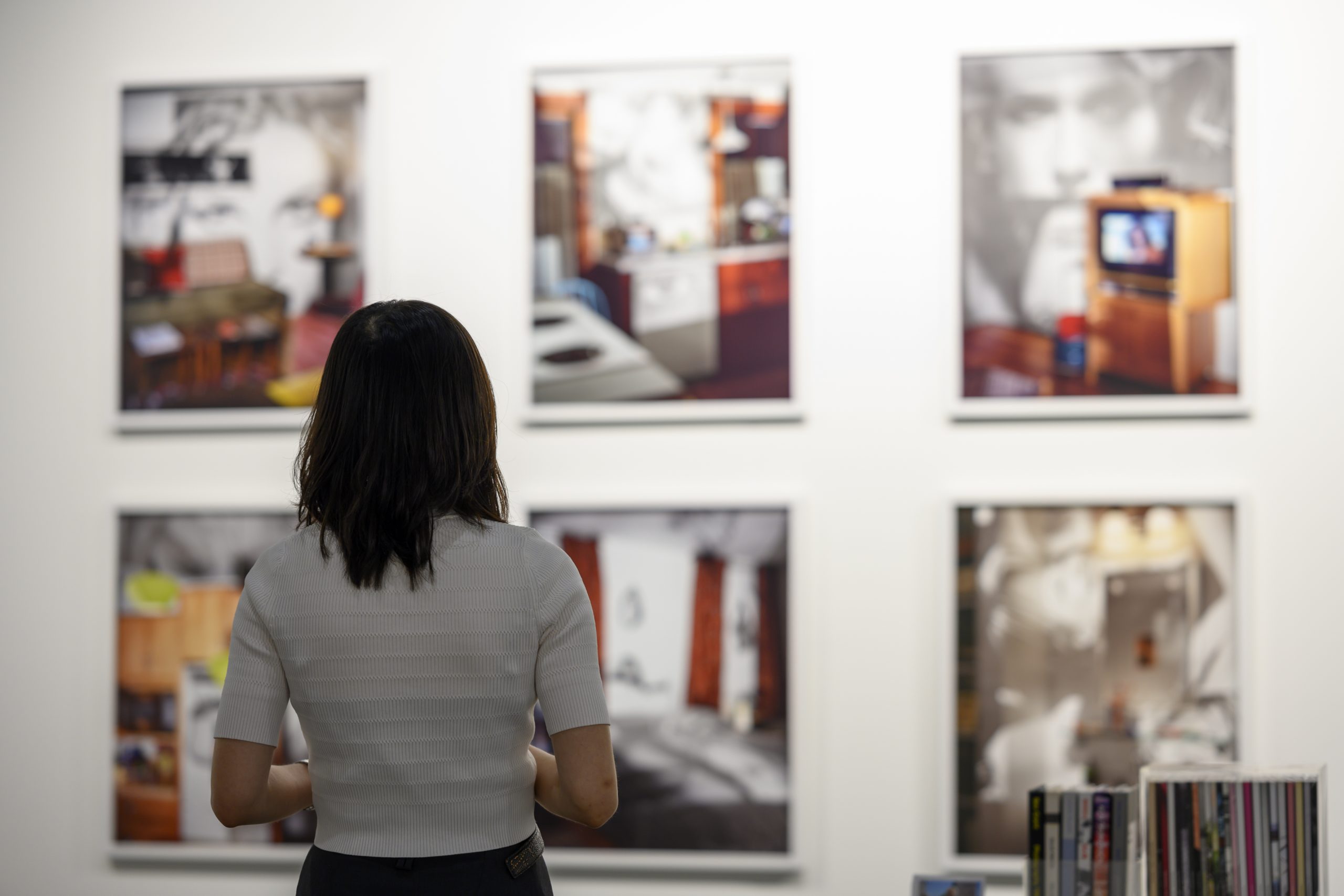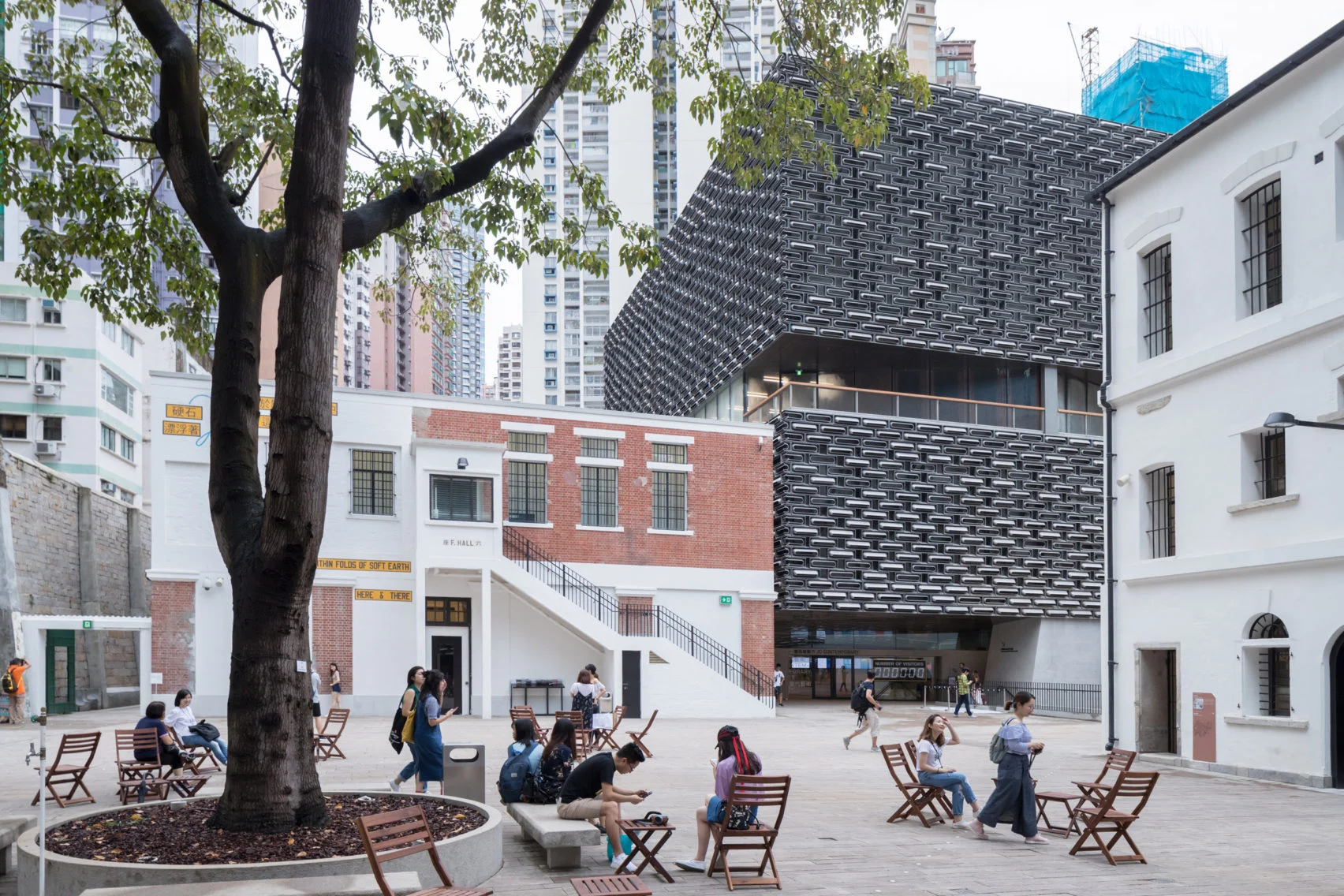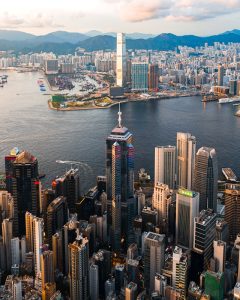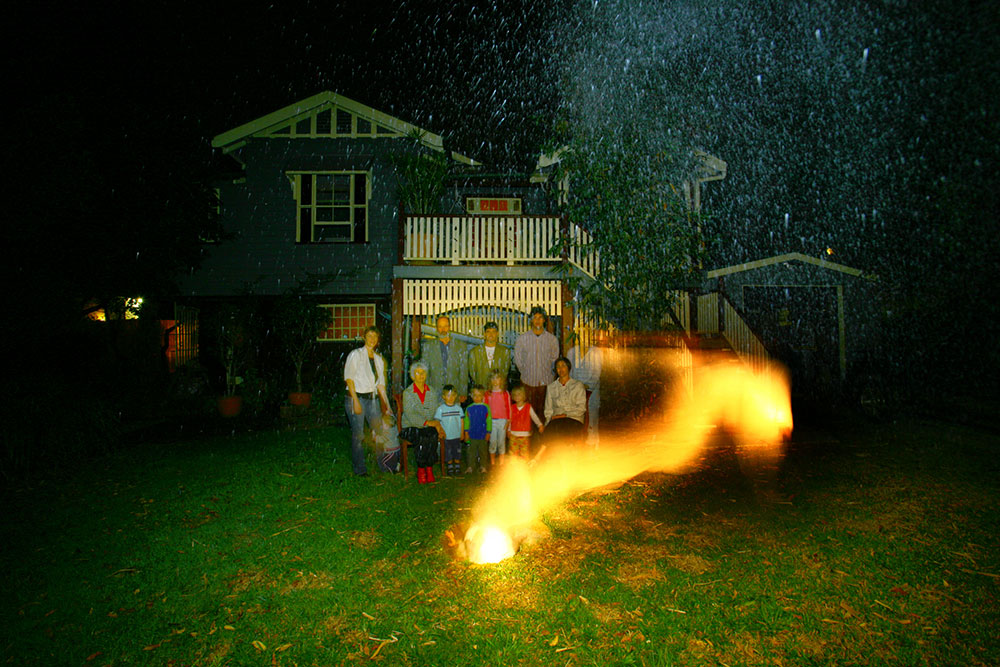Text by MAANAV JALAN
The most well-remembered figures in the history of photography happen to be its fathers. However, many of contemporary photography’s genre-defining and pathbreaking artists have been, and continue to be, women. Think of Cindy Sherman’s (b.1954) staged and caricatured self-portraits, Nan Goldin’s (b.1953) personal-political archives that simultaneously act as family albums and photo-journalism, or Shirin Neshat’s (b.1957) conscious use of the ‘female gaze’ and combination of image with text. The history of contemporary photography and photo-based art is impossible to imagine without these contributions.
Here, we bring you a guide to some of Asia’s most important contemporary women artists working with the camera. The list includes artists who have worked in their home countries all their lives, those who have migrated to others, artists of mixed heritage; and spans artists across generations, from those like Wo Bik Wong (b.1949) and Holly Lee (1953-2024), who have been instrumental in the establishing conceptual photography in Hong Kong, to young artists like Ma Hailun (b.1992), who is using her background in fashion photography to shine new light on her home in China.
Wo Bik Wong (b. 1949)
Best known for her sensitive photographs of now-demolished landmark buildings of 1980s Hong Kong, Wo Bik Wong is not only one of Hong Kong’s leading contemporary photographers but also a researcher and educator, key to the development of the medium in the city. A founding member of the Hong Kong Photographic Culture Association and Hong Kong International Photo Festival, her consistent role in the city’s photographic communities over the past three decades makes her a pillar in its photo world. Constantly evolving and experimental in her own practice, Wong’s oeuvre spans auto-biographical polaroids that have been called ‘experimental’ and ‘daring’, sculptural works stretching the possibilities of the photographic medium, cyanotypes, photobooks and video-work. Throughout, the artist remains focused on the location of human experience and memory within natural and architectural worlds.
Holly Lee (1953-2024)
A pioneer of conceptual photography in Hong Kong, Holly Lee was one of the founders of the ground-breaking photography journal Dislocation, alongside her husband, Lee Ka-sing. One of the first Hong Kong artists to use digital manipulation in her work, the artist’s most important project, The Hollian Thesaurus is a set of twelve staged photo-portraits superimposed with visual elements from Hong Kong’s British colonial past, Qing court painting and more, to present a witty and complex picture of Hong Kong’s contemporary culture. Tina Pang, curator of Hong Kong Visual Culture at M+ calls Lee a ‘real [pioneer], not only in [her] own artistic work but in creating platforms for collaboration in publishing and advocating for the value of photography as an art form.’ Since 1997, Lee lived in Toronto, Canada with her husband and collaborator Lee Ka-sing, where she continued to publish work under the banner of the duo’s online platform, Ocean Pounds.
Pushpamala N. (b. 1956)
Born in Bengaluru, India, Pushpamala N., has been called contemporary Indian art’s ‘most entertaining artist-iconoclast’. In her photography practice, the artist stages performative photographs or ‘photo-romances’—self-portraits in which she casts herself in various fictional and melodramatic roles inspired by female archetypes in film. These work as ironic challenges to dominant cultural narratives for the artist who says, ‘I like jokes, I like the vernacular, I’m interested in theory’. Pushpamala’s interest in irony and masquerade is also apparent in her photobooks such as Native Women of South India: Manners and Customs that satirize colonial ethnography, and in her ongoing Mother India project in which she takes on feminine icons such as Goddess Kali and Mother India, central to India’s national hagiography. For the artist who started her career as a sculptor, the camera and photograph are not just her instrument and material, but also concept and story.
An-My Lê (b. 1960)
A highly-decorated photographer with honors from the Guggenheim and MacArthur Fellowships under her belt, An-My Lê makes memory and fantasy visible in representations of geo-political conflict and, as critic Hilton Als has written, ‘elucidate[s] the complicated nature of the aesthetics and spectacle of war’. Displaced to the US from Saigon during the Vietnam War as a teenager, many of Lê’s best known projects revisit this scene from her past, including her lyrical photographs made over visits to Vietnam in the 1990s, and her subsequent project Small Wars, documenting Vietnam War reenactments in the United States. ‘I am committed to describing life, but I also [want] to riff on it’, the photographer says, explaining her use of conventions of photo-journalism to play with fact, fiction and imagination. Alongside photography, she works with film, video, textiles, and sculpture.
Fiona Tan (b. 1966)
Born in Pekanbaru, Indonesia to a Chinese-Indonesian father and an Australian mother, Fiona Tan lives in Amsterdam and works consistently on themes of history, archives, memory and identity, especially meditating on their mutability in global culture. Best known for her video works, such as Disorient (2009) made for the Dutch Pavilion at the 53rd Venice Biennale, Tan works with the camera in various ways, creating her own formal language for image-making that writer David Campany has called ‘photo-filmic’. Photographs become temporal and videos refract into imagistic elements in her hands; as she says, ‘time is both a tool with which to shape and chisel and a material to fold, distort and configure’. An artist ‘who has spent her career mining archives and probing their authority’, materials like colonial photographs, personal letters and mugshots weave into her work that take documentary, speculative and fabulous turns.
Rinko Kawauchi (b. 1972)
A photographer who has described her photographs as ‘whispers’, Rinko Kawauchi is known for her lyrical and dream-like images of ordinary moments. Born in Shiga and based in Chiba, Japan, Kawauchi began her career as a graphic designer and took up photography professionally after publishing a trilogy of photobooks, Hanako, Hanabi and Utatane in 2001 and subsequently winning the prestigious Kimura Ihei Photography Award. Photobooks have remained a key form for the artist, conceiving almost all her projects also as photobooks. ‘Books allow their readers to build a close-knit connection to my images,’ explains the artist. As with her very first images, the photographer continues to be interested in revealing the sublime in quotidian scenes such as that of an egg cracking, a flock of birds flying in the sky, the burst of a firework or the blink of an eye.
Lieko Shiga (b.1980)
Lieko Shiga likens the camera to a portal. Using a diverse array of technical and conceptual processes, Shiga creates surreal and ‘flamboyant’ photographic narratives, that ‘not so much record the world as remake it’. Born in Japan and educated in London, she is best known for her project, Rasen Kaigan or Spiral Coast, made starting in 2008 when she started working as the ‘town photographer’ in a small community in the Miyagi Prefecture. The project now exists as a poetic archive, containing her images of local activities and religious festivities alongside photographs found and made after the devastating Tohuku earthquake of 2011. The mythic, supernatural and spiritual combine with the everyday in all of Shiga’s work, that she situates in ‘an eternal present’, a testament to photography’s expressive possibilities.
Guo Yingguang (b. 1983)
From her beginnings working as photojournalist for media platforms such as Reuters and China Daily, Guo Yingguang’s practice has become increasingly conceptual and experimental over the years. On the heels of her return to China after an MA at the University of the Arts London, Yingguang began a staged journalistic project titled The Bliss of Conformity in which she fashioned herself a woman advertising herself for marriage at the People’s Park in Shanghai, mimicking and commenting on match-matching practices in the country that, to the artist, reduced women to their financial and physical characteristics. ‘I’ve never positioned myself as a female photographer,’ says the artist, but agrees that the ideas that interest her relate to female stereotypes, ageism and consumerism in contemporary Chinese society. The first recipient of the Jimei ARLES Madame Figaro award in 2017, the artist has recently expanded her artistic vocabulary with sculpture, installation and performance, in each case finding new ways to open up personal and private worlds into the public arena.
Yushi Li (b. 1991)
Born in China and based in the UK, Yushi Li works with the conceptual intricacies of the camera’s gaze as a photographer and academic. She says, ‘When I look through the lens … looking at the viewer, I become both the looker and the looked-at’. Her interest in looking and being-looked-at comes alongside a deep interest in representations of women and Asian women in art history and contemporary culture. In her most well-known project, My Tinder Boys, she photographs nude men in the midst of everyday tasks as a way of activating an ‘erotic female gaze’. She has continued to develop this idea in her recent works, in many of which she places herself in the foreground, dispassionately looking into the camera lens.
Ma Hailun (b. 1992)
Born in Xinjiang, China and educated in New York, Ma Hailun combines the slick aesthetics of fashion photography with specific regional styles of her home province. A successful fashion photographer in New York shooting covers for publications like Vogue, the photographer returned to her province in the North West of China in 2019 to showcase its cultural diversity and richness. ‘f you search for images of Xinjiang online, you get these very National Geographic images—stunning landscapes and maybe a smiling old man from a nomadic tribe,’ she says. ‘I wanted to present a younger perspective of what is happening’. The traditional and contemporary styles of her friends, family and community, all from various ethnic and social groups of Xinjiang have since been the focus of her work, shining new light on her home and the value of sensitive and personal fashion photography.
PHOTOFAIRS Hong Kong will take place 26-30 March 2025 (VIP Preview March 25) at the Central Harbourfront.



